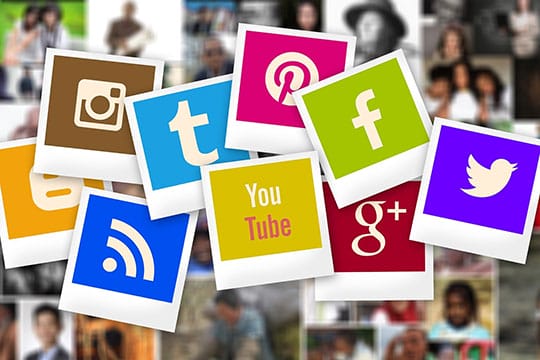Any small business strategy should incorporate social media into account. With the growing number of users on different social media platforms, chances are your customers and prospects are there.
Why is Social Media Presence Important?
If your account is not being active and engaging on social media as a business, you won’t get the chance to solve poor customer experiences. These negative accounts can spread like wildfire through your client-base and may damage the reputation of the business you’ve worked hard to build. The last thing you’d want to happen is for your customers to be invisible to you until everything is too late.

Another consequence of not having a social media presence is that you’re going to miss out on sales opportunities. If you use your social media pages not only for publishing but also for engaging with your audiences, you’ll get surprised by how the number of users who would be willing to buy from you skyrockets.
Social media is there not only as an avenue for you to connect with those individuals who already developed a love for your brand but also to reach out to those who are yet to hear about your business.
Indeed, social media is powerful. However, many small businesses misuse it or don’t bother using it to their advantage at all because of the fear of committing mistakes or because they’re thinking that it’s an expensive strategy. The truth is that integrating social media with your marketing strategies is pretty simple so long as you know how to manage it properly.
Recommended for you: 11 Tips to Protect Your Business Social Media Account from Hackers.
How to manage social media accounts for small businesses?

Listed below are ways on how to manage social media accounts for small businesses, which could help you determine the best social media posting strategy for your small business venture.
1. It Should Always Start with A Plan
Organic posts are free, and there are many social media tools out there that are readily available and you can easily use them. It’s the reason why some business owners get tempted to dive in immediately. They start posting even without a concrete plan. However, like every successful business strategy, a plan is essential when using social media for small businesses.

You won’t know what you want to achieve without a plan as you don’t have clear goals. It becomes a problem when you already want to measure the results that you’ve obtained since there’s no way you can do it. The best thing to do is to come up with a social media plan before taking any action. It makes your business goals clear, as well as ensures that your social media efforts are in line with them.
To create a social media marketing plan, you have to identify and set your goals and objectives first. Then, research about all possible competitors in the market. Next is to audit your social media accounts. Then, find inspiration before finally creating your social media calendar.
2. Get to Know Your Social Media Audience
Before creating a campaign on social media, you have to know your audience first. It’s something that you’ll always hear from expert marketers.

The best thing you can do is to pull social data and compare these with your understanding of who the audience of your business is. It’s a way of verifying your knowledge and getting to know your social audience better. Social media platforms have their own data, but you can also use third-party tools to help you become more effective in identifying your audience.
3. Identify the Platforms That You’d Want to Focus On
One of the biggest mistakes that business owners make is that they assume about which social media platforms their customers spend most of their time online. For example, it’s easy to make assumptions that your millennial targets focus on Snapchat or Instagram these days. However, evidence shows that they still use Facebook.

Don’t commit the same mistake. Conduct some research to understand how a specific portion of your audience spends time on the Internet. By doing this, you can be confident that all your social efforts are not getting wasted.
Please take note, however, that an all-or-nothing approach doesn’t make sense here. Yes, you heard it right, you can still reach different audiences and meet your business goals even if you use various social media channels.
4. Engage with Your Audience to Build Relationships
As a business entity, you must engage with your audience on social media.

Comment on online or offline experiences, commendation of a specific product or service, an issue with a particular product or service, and questions are the common reasons why customers decide to reach out to you on social media platforms. To build a deeper relationship with these people and eventually sell more, you have to answer questions and address concerns from your audience promptly.
5. Reach More People
Revisit your entire social media plan once you already have a clear picture of your audience. The next step would be to discover ways to expand your reach and connect with more people who are similar to your existing customer base.

If you own a small business that operates locally, you’ll also benefit from social media in terms of driving new customers to your products or services. Some social media platforms allow you to monitor local conversations about your business. You can even respond to these conversations to build relationships with people and other companies in your area.
You may like: Exploring the Impact of Technology & Social Media on Today’s Businesses.
6. Share Compelling Visuals
A visual component in a social post can go a long way in engaging your audience. Images have the power to drive real-world action. And, it’s the reason why most online purchases get triggered because of pictures that surface on different social media platforms.

Visual-first social media platforms include Snapchat, Pinterest, and Instagram. Whatever you want to say, no one will get interested in it if your content lacks the aesthetics that can stop a user from scrolling. Merely saying, your content has to look good, and it holds even when posting updates on Twitter. Adding a GIF or image on your tweet gathers more attention than plain words.
7. Create and Publish Videos
Engagement on different social media platforms now gets attributed to video content. However, creating one can be intimidating, especially when you lack resources to help you shoot something of high quality. It also holds when you can’t find a proper location where you can do the filming.

Creating videos that you can publish on social media doesn’t have to be complicated. Ponder on the following tips to help you become better at coming up with video contents:
- Identify your goals and objectives and base the content of your video on them.
- Don’t stop with only one video content on your social media accounts; the more, the better.
- Keep the video content short.
- As much as possible, work all by yourself or with your in-house team and avoid hiring outsiders.
- Always use a script.
- Understand the requirements of each social media platform and edit your videos based on them.
- Come up with optimized messages for each video content.
- Respond to all comments on your video content.
- Use analytics to measure the success of your video.
8. Identify the Best Time for You to Post Content

Is there a “perfect” time to post content on social media? The answer is no. The best thing to do is to figure out the best time yourself. It’s possible that what’s best for you may differ from the others, and it’s normal. It all depends on the type of audience that you have. Start with the trends in your previous posts by identifying those that got top engagement, and keep a record of the time they got published.
9. Quality Over Quantity
What’s most important about engaging your audience is to create quality content. Publishing only two or three posts that obtain a good number of views and impressions each month is better than having more that fail to catch the attention of your customers and prospects.

How do you come up with quality content? Offer value. Many business owners and marketers commit the mistake of pitching all the time. If you show to people that all you want to do is to sell them something, they’ll likely lose motivation to follow you.
Focus on building relationships instead. Be human and honest in every content that you post. Sales will eventually follow once your target market already sees your authenticity as a brand.
10. Combine Organic Content with Paid Ones

Should you consider running paid ads? With most of the tips here focusing on organic posts, you might think that paid ads are not necessary anymore. The truth is that they can still be of great help, especially when you don’t get the views and impressions you’d like to have after a series of social media posts. A few dollars won’t hurt if it means boosting your existing and new content.
11. Use the Right Social Media Tools

Some tools and apps simplify or automate much of the work on social media, and you’d want to take advantage of them. Using them means you won’t have to hire the services of a full-fledged social media team since the tools can already help in boosting your productivity.
You may also like: Top 10 Ways Social Media Can Help Your Business.
Final Thoughts

Don’t forget to keep track of what strategy works and what doesn’t for you. By doing this, you’ll have the chance to improve your results by fine-tuning your efforts. You can make use of an analytic tool for your accounts to get a clear picture of your different social media campaigns and the specific metrics that matter most to your small business.





